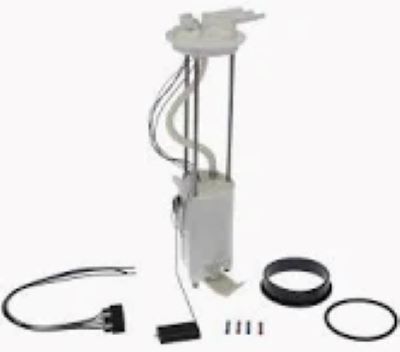Diagnosis of Fuel Pump problems need to discover the symptoms and affirm that in the first place, pump is at fault. The first symptoms of a bad Fuel Pump is when you start the engine_Meta(Data) (and both are easy to verify)_2 Since the pump has low pressure, it will have difficulty delivering fuel to start your engine — and you could experience starting issues. When starting the engine, If it's inconsistent or takes multiple tries to start there is a chance that the Fuel Pump could be getting weak and should bee looked at.
Unusual noises can also be signs of pump problems, so listen for these as well. A major sign of a Fuel Pump that is failinga high-pitched whine or buzzing sound, especially when the fuel tank is low. These noises are often discovered near the fuel tank by mechanics using a mechanic's stethoscope. This is a foolproof indicator, as sound shows up in more than 40% of repair data that lead to fuel pump failure.
Just as with any fuel related check, checking the fuel pressure is super important for a proper diagnosis. Fuel injection set up so normally psi is between 30 and 70psi relying on what the car calls for. Yes,you can directly measure it at the rail using a fuel pressure gauge while engine is running. Low readings could suggest that not enough pressure is being delivered by the Fuel Pump. Mechanics advise that the correct pressure should be used to prevent low-pressure lean fuel mixtures, engine misfire and reduced performance.

If you rely entirely on the trickle of fuel that is getting through, signs like stalling, hesitation or poor acceleration can be indications as well. However, if the Fuel Pump cannot supply a constant flow of fuel, the engine will have problems completing combustion and there may be stalling or hesitation on acceleration. A study of car diagnostics highlighted that more than 30% of the cars showing these signs after further checks were due to have completely busted fuel pumps; meaning it is a sign you shouldn't take for granted.
Another important diagnostic step is to check the fuel filter. A clogged Fuel Filter can bear similarities to the same symptoms as you would get if your Fuel Pump were failing, namely restricting fuel flow and making it more difficult for the pump to effectively deliver fuel. Replace your fuel filter every 20,000 to 30,000 miles or sooner if you notice a difference in how well it runs (clogged filters make the pump work harder and can reduce its life by up to one fifth). This will indicate whether the problem lies with a filter that needs replaced, or if it is the pump itself.
Finally, scanning for Diagnostic Trouble Codes (DTCs) using an OBD-II scanner can help you gain information on fuel system issues. P0087 (Fuel Rail/System Pressure – Too Low) or P0230 are examples of codes that indicate problems with the Fuel Pump and related components. Because the scanner can help identify what may be wrong, or confirm suspicions before any real invasive testing (or even replacement) is performed.
It is suggested that this combination of methods be used to consistently diagnose COVID-19 accurately. By checking for symptoms, performing Pressure tests and reading Diagnostic codes you can properly diagnose Fuel Pump problems so as to fix them in time preventing other engine threats. Regular checks and looking out for early symptoms helps keep a Fuel Pump diagnostic uncomplicated, less intimidating to maintain as well as avoid expensive repairs.
